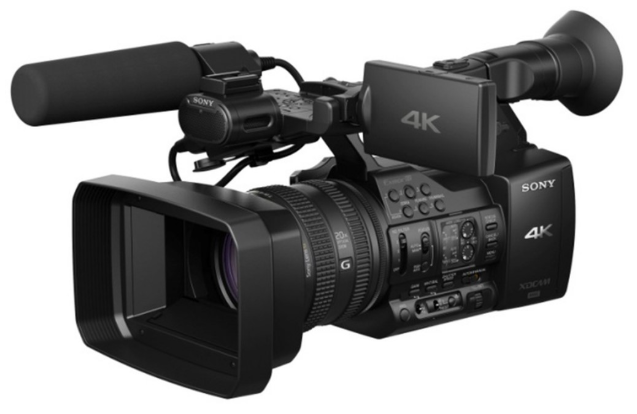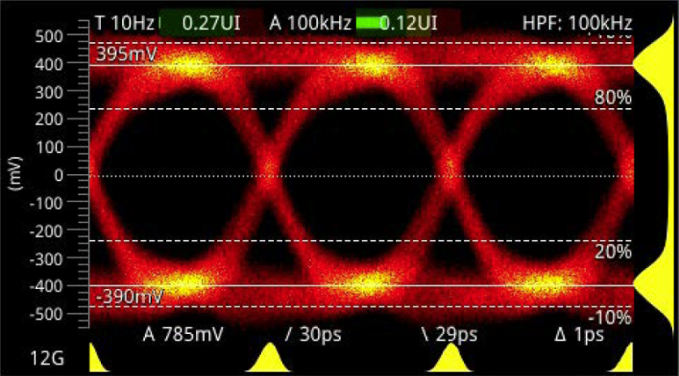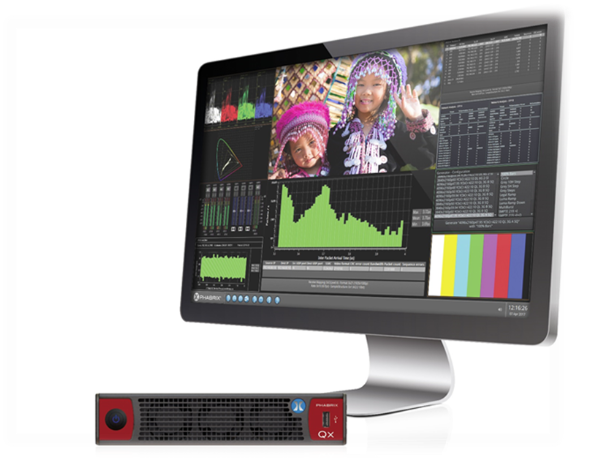With the widespread adoption of 4K Ultra HD technology, SDI (Serial Digital Interface) signal cameras are increasingly used in fields such as broadcasting and television, film production, and security surveillance. To ensure the stable quality and clear picture of the 4K Ultra HD SDI video signals output by these cameras, professional testing is particularly important. This article will focus on the testing requirements of SDI signal cameras, introducing the testing methods, measurement metrics, evaluation criteria, and the required equipment—SDI Signal Analyzer—for 4K Ultra HD SDI video signals.

1. Application Scenario: Testing Requirements for SDI Signal Cameras
In the field of video transmission, the SDI (Serial Digital Interface) signal is a widely used digital video transmission standard. Known for its uncompressed nature, high quality, high fidelity, and low latency, it plays a crucial role in broadcasting, film production, video surveillance, and other domains. An SDI signal camera is a type of camera that transmits video signals using the SDI interface.
In the broadcasting and television industry, SDI signal cameras are commonly used for large-scale sports events, concerts, news interviews, etc., requiring the output video signals to have high resolution, low latency, and high stability. In film production, SDI signal cameras are used to capture high-quality film and television productions, demanding extremely high requirements for picture detail, color reproduction, etc. In the security surveillance field, SDI signal cameras, with their advantages such as strong anti-interference capability and long transmission distance, are the preferred choice for high-definition surveillance systems.
To meet the needs of these application scenarios, professional testing of SDI signal cameras is particularly critical. Through testing, issues related to signal output and transmission can be promptly identified and resolved, ensuring the final video quality meets requirements.
2. SDI Test Metrics and Evaluation Methods

When testing 4K Ultra HD SDI video signals, the following key measurement metrics need attention:
1、Amplitude (Level): This is an important characteristic of the SDI signal, reflecting the signal strength. The stability of the amplitude level is crucial for ensuring signal quality during transmission.
2、Jitter: Jitter refers to small time-based deviations of the signal from its ideal position. Jitter testing is a vital means of assessing SDI signal quality, helping to identify instability factors in signal transmission.
3、Rise Time / Fall Time: These parameters describe the speed at which the signal changes from low level to high level (or vice versa). For SDI signals, fast rise/fall times help ensure signal clarity and accuracy.
4、Unit Interval (Period): This refers to the time interval between two adjacent bits in an SDI signal. Maintaining a stable unit interval is essential for signal synchronization and decoding.
5、Eye Pattern (Eye Diagram): An eye pattern is an intuitive tool for displaying signal quality. It allows observation of characteristics such as amplitude, jitter, rise/fall time, etc. Eye pattern analysis is an indispensable part of SDI signal testing.
6、Bit Error Rate (BER): BER is the ratio of the number of erroneous bits to the total number of bits transmitted during signal transmission. Measuring BER assesses the reliability of the SDI signal during transmission.
All the above metrics pertain to physical layer testing. They can be measured using an SDI Signal Analyzer. The instrument tests these key metrics, produces data results, and the quality of the current SDI signal transmission is then evaluated by comparing these results against standard requirements.
3. Test Equipment: Portable 4K SDI Tester QxL Plus

The Portable 4K SDI Tester QxL Plus is a high-performance SDI Signal Analyzer. Designed specifically for testing 4K Ultra HD video signals, it features robust testing capabilities and portability, meeting the SDI signal testing needs across broadcasting, film production, system integration, and more. The product offers the following functional features:
1、4K Ultra HD Testing: Supports testing of 4K resolution video signals, ensuring video quality complies with Ultra HD standards.
2、SDI Signal Analysis: Provides detailed analysis of SDI signal electrical performance, including key parameters like eye pattern, jitter, drift, etc. Supports multiple SDI signal formats such as HD-SDI, 3G-SDI, 6G-SDI, 12G-SDI, etc.
3、Video Format & Content Testing: Measures key video parameters like resolution, frame rate, color space, luminance range, etc. Supports HDR (High Dynamic Range) and WCG (Wide Color Gamut) testing to ensure excellent image color and brightness performance.
4、Lip Sync (Synchronization) Testing: Provides audio-video synchronization performance testing to ensure picture and sound are in sync.
5、IP Stream Testing: Supports IP stream testing based on SMPTE ST 2110 and 2022-6 standards, adapting to future trends in video systems.
6、Physical Layer Testing: Offers comprehensive physical layer test options, including measurements of eye amplitude, transition time, overshoot, etc., aiding in the analysis of complex faults.
By using this SDI Signal Analyzer, users can easily complete the testing of 4K Ultra HD SDI video signals, ensuring the camera's output signal is stable in quality and produces a clear picture, meeting the demands of various application scenarios.

4K Ultra HD SDI video signal testing is a crucial step in ensuring SDI signal cameras output high-quality video signals. By focusing on key measurement metrics such as eye pattern, jitter, BER, and amplitude level, and using a professional SDI Signal Analyzer for testing, issues related to signal output and transmission can be promptly identified and resolved. Besides directly testing the SDI signal, the SDI Signal Analyzer also supports generating standard SDI signals to feed the device under test (DUT). The signal output from the DUT is then looped back into the analyzer, forming a closed-loop test. This allows for a clearer assessment of the DUT's SDI signal processing capability and meets diverse testing requirements.
Beijing Doewe Technologies Co., Ltd. owns the independent brand "Doewe Instruments," focusing on the R&D, production, and sales of electronic test and measurement instruments/test systems. After years of development, the company's business scope covers multiple fields, establishing several business divisions: Broadcasting/AV Division, Transportation Division, University & Research Institute Division, and Consumer Electronics Division. We relentlessly pursue innovation in test and measurement technology, committed to technology development, application software services, and research into test and measurement solutions. To this end, we established the "Doewe Technologies Center" in Beijing and the "Qingdao Technology Service Center" in Qingdao. Relying on the Beijing headquarters and related technology centers, the company has gradually established a nationwide service and sales network, including Northeast China Office, East China Office, Southwest China Office, and South China Office, enabling us to provide timely pre-sales and after-sales service.
Tel: 010-64327909
Website: https://www.doewe.com
Email: info@doewe.com
Address: Room 1821, Building 2, Soubao Business Center, No. 16 Nan San Huan West Road, Fengtai District, Beijing